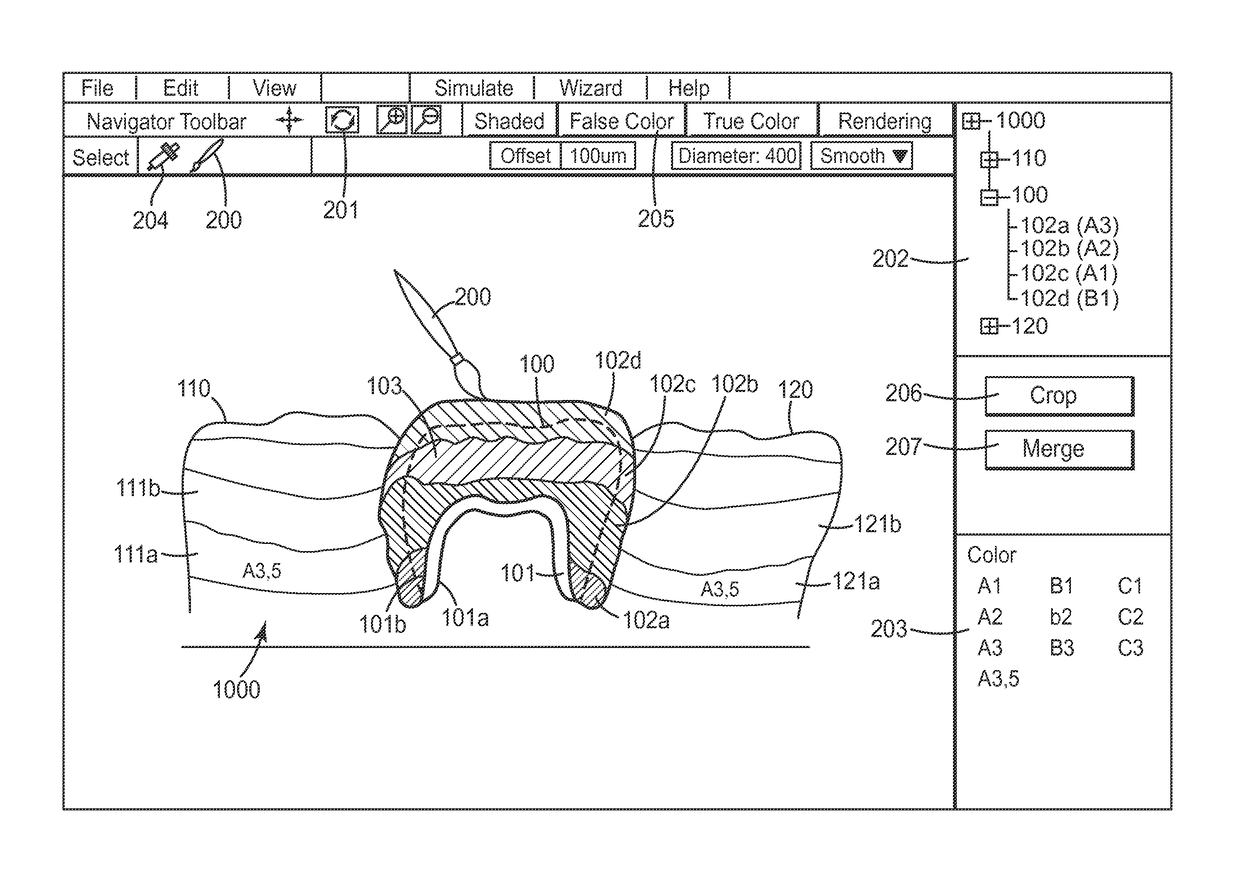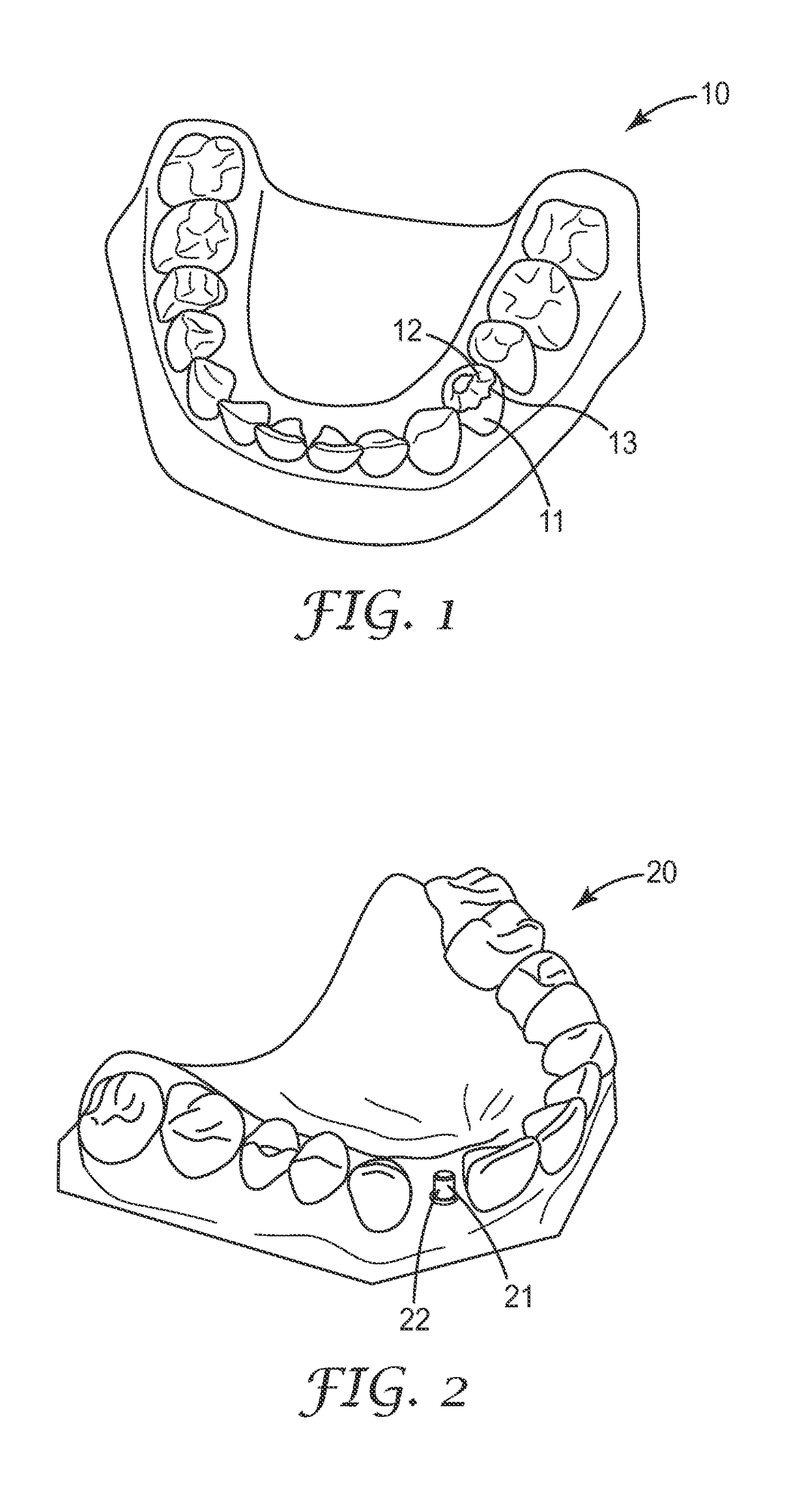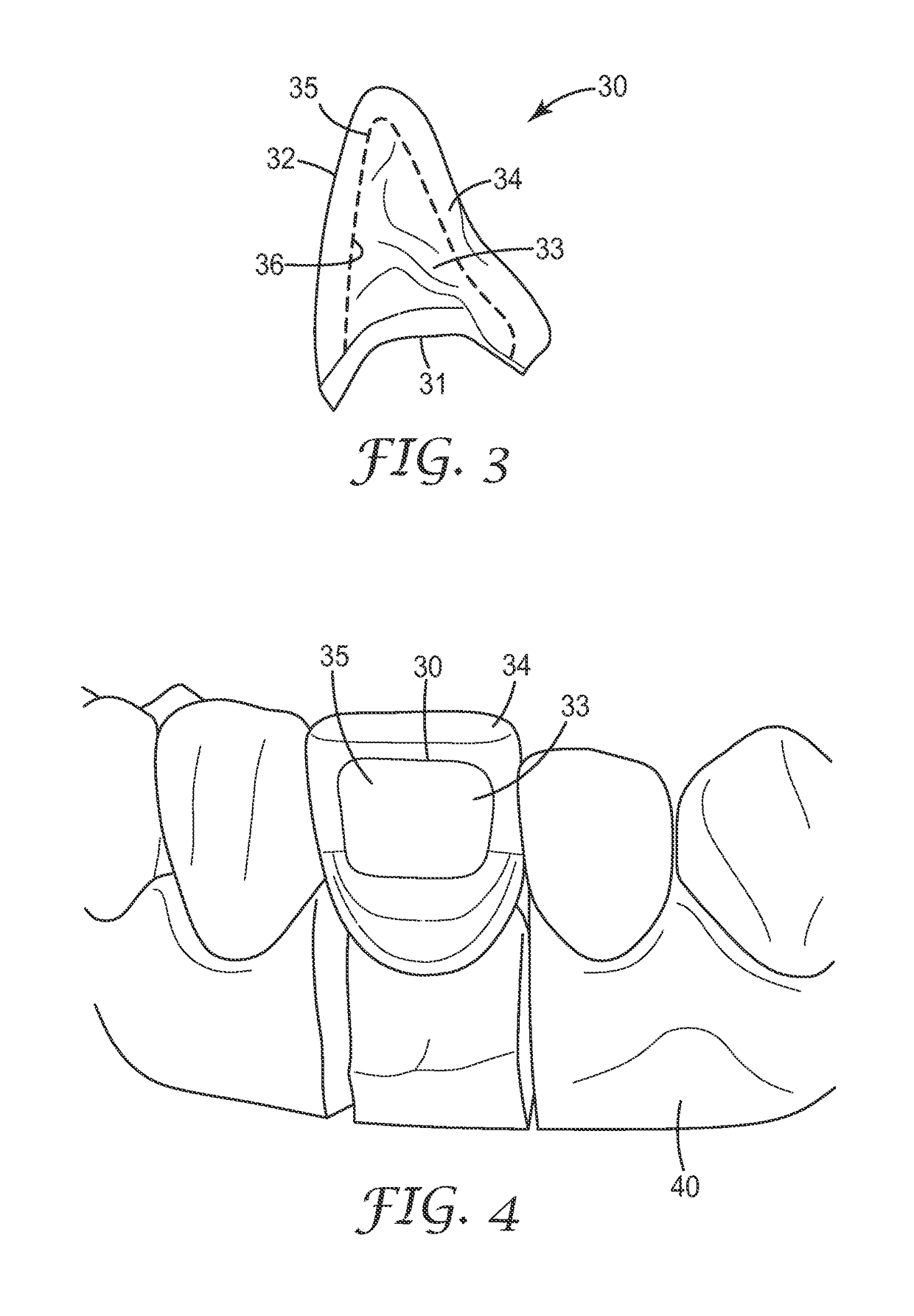[0026]Preferably each simulated layer is assigned only one color. A color gradient may thus be obtainable by providing several layers each having a single color and not, by providing single layers with different colors. This may facilitate manufacturing of the dental restoration, for example by use of a build-up process.
[0027]The invention is advantageous in that it preferably allows for maximizing the precision of the coloring of a dental restoration in a computer aided process for making the dental restoration. In particular the invention may allow for separating the tasks of coloring and shaping of the dental restoration during the design and to combine color and shape in the final dental restoration. For example a dental framework used in a dental restoration may be provided with the required dimensions to provide a sufficient mechanical stability for the dental restoration, and the coloring of the dental restoration may not influence such mechanical stability. On the other hand the dental restoration may be colored without affecting the outer geometry of the dental restoration or the geometry of the dental framework, for example. The invention also allows for layering in all three dimensions, and not only in dimensions relating to the layer thickness. Further the invention preferably allows for readily manufacturing a dental restoration at the desired shape and coloring. In particular a grinding of the finished dental restoration, which in some instances may affect the mechanical stability or surface quality of the restoration, may be avoided. The invention further preferably allows for the use of relatively durable materials for the dental restoration. For example the invention may allow for the use of ceramics and / or glass ceramics with still preferably allowing the restoration to be provided with a coloring that pleasantly resembles a natural tooth. The invention may be further advantageous in that it allows a coloring of the dental restoration by reference to natural tooth colors present in a patient's dentition. As a further advantage the invention may allow for reproducing dental restorations at substantially the same shape and color. For example in case a dental restoration is damaged prior to implantation in a patient's mouth, for example during a firing step if required, such restoration may be easily replicated.
[0032]In a further embodiment the method further comprises the step of visualizing the plurality of layers in colors that resemble natural tooth colors, for example standard tooth colors according to the VITAPAN™ color scheme. For visualization of the colors a color calibrated screen may be used. This may provide a generally realistic color representation of the layers and / or the dental restoration. Further the method may comprise the step of measuring or comparing a color assigned to a layer on a color calibrated computer screen. This may allow the user to precisely adjust the color of a layer to a desired color. For example the user may use a physical color sample, place it on the screen and compare the color of a layer displayed on the screen with the color sample. The user may then adjust the color of one or several layers to adapt the color of a layer or several layers in combination to the color sample. The method may further comprise the step of visualizing the plurality of layers in colors of a false color range which is associated with a natural tooth color range. The individual VITAPAN™ tooth colors may for example each be assigned a certain color of a full color range so that the different tooth colors can be displayed as different clearly distinguishable colors. For example different colors of the standard color scheme which basically differentiate by color nuances may be visualized as colors like blue, green or red, for example, such that the colors can be clearly distinguished by the user. The method may further comprise the step of, preferably user-controlled, toggling between the tooth color visualization and false color visualization.
[0033]In a further embodiment the method comprises the step of, preferably user-controlled, providing at least two overlaying layers different tooth colors to provide a resulting tooth color by the overlaid layers in combination. The method may comprise the step of, preferably user-controlled, providing more than two overlaying layers different tooth colors to provide a resulting tooth color by the overlaid layers in combination. This preferably allows the user to adjust the resulting color of the dental restoration model at a color level which is between levels of any standard tooth color scheme. The method may further use raytracing of the dental restoration model and / or a model of one or more neighboring teeth of the patient. Further the dental restoration model and / or the model of one or more neighboring teeth may be visualized at different illuminations, for example illuminated from different perspectives and / or by use of different light sources (point or surface light). Thus the color of the dental restoration (for example provided by the layers) may be visualized relative to one or more neighboring teeth, and optionally readjusted by the user as desired.
[0039]Further in one embodiment the method comprises the step of directly or indirectly assigning at least one of the plurality of layers with a translucency / opacity, fluorescence and / or with a refractive index. Thus the dental restoration may not only be provided with different desired colors but further with different desired translucencies / opacities, fluorescences and / or refractive indices. This may allow a user to design a dental restoration which pleasantly resembles a natural tooth.
[0046]In one embodiment the method comprises the step of cropping at least one of the layers to virtually cut off portions of that layer which extends outside the outer dental restoration surface. This may enable the user to apply layers to the dental restoration for providing the dental restoration with certain colors independent from designing the shape. Accordingly a user may independently focus the attention to coloring and shaping of the dental restoration. This may be advantageous for maximizing the optical appearance and at the time the functional properties of the dental restoration.
 Login to View More
Login to View More  Login to View More
Login to View More 


